Media | Articles
How Detroit’s Big Three cashed in on coachbuilders
Car enthusiasts are accustomed to aspirational names on vehicles: “Le Mans” on workaday Pontiacs; “Cougar” on mild-not-wild Mercury station wagons, and “Falcon” on a Ford economy car that could not fly—these are but a few examples.
Cashing in on a brand name is standard practice in the auto industry. For many years after WWII, two Detroit brands repurposed names of renowned coachbuilders to give high-line models an extra dose of dash. In some cases it was marketing sleight of hand, suggesting coachbuilt construction that was more homage than anything else.
Rare today, “coachbuilding” was a not-uncommon practice among luxury makes before WWII. The automaker would provide a rolling chassis with running gear to a design and body specialist house, giving elite clients a dose of exclusivity and class over standard-issue models. As Hagerty editor-at-large Aaron Robinson put it: “Coachbuilders delivered a few handmade bolides produced by irreplaceable craftsmen using ancient tools and techniques, while mass production harnessed unskilled labor and mechanized automation to deliver millions of identical vehicles at an affordable price.”
While the practice largely faded in the post-war era, the status that came with a designer label remained powerful. Cadillac leveraged this name equity with Fleetwood-badged models and Chrysler did so with the LeBaron-badged Imperials. Both names had originated from pre-war designer/body-makers that were later acquired by their largest customers.

From Italy came big names like Pininfarina, Vignale, and Ghia. That last name had perhaps become best known in America for the 1955–1974 Volkswagen Karmann-Ghia, or as a trim badge on 1970s Fords. Ghia, however, had an illustrious history that included building Chrysler concept cars and limited-production specials in the ’50s and ’60s.
Marketplace
Buy and sell classics with confidence
Gradually, these designer badges lost their meaning and connection to their history. One even became the butt of a joke in American comedy. How did things go so far downhill?
Let’s have a look at Fleetwood, LeBaron, and Ghia.
Born in Fleetwood, Pennsylvania
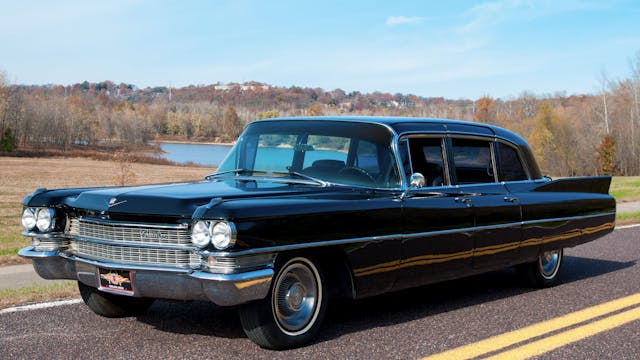
Perusing some car auction catalogs and websites, you might see references to “Body by Fleetwood” or even “Coachwork by Fleetwood” for Cadillacs from the 1950s–1970s. It’s not the real deal, so treat these models with an asterisk that nods to genuine coachbuilding history. Fleetwood, you may not know, was there near the start of the automobile’s story in America.
At the turn of the 20th century, it was popular for automakers to subcontract body design and manufacturing. The Fleetwood Metal Body Company of Fleetwood, Pennsylvania, sixty miles outside Philadelphia, supplied several makes, including the General Motors brands. Around the same time, Fisher Body Company (founded in Detroit in 1908) innovated and supplied closed auto bodies for GM and others.
Consolidation within the auto industry made big players bigger. GM bought 60 percent of Fisher in 1919. Six years later, Fisher bought Fleetwood and moved the Pennsylvania operation to its Fort Street factory in Detroit, renaming it the Fisher Body Fleetwood Plant. GM bought out Fisher in 1926 and essentially married Cadillac to Fleetwood.
A successful union
Cadillac deftly adapted Fleetwood’s design and construction expertise, not to mention the cachet of its name. Fleetwood Cadillacs from the ’30s could stand up to any coachbuilt cars of the period. By the late ’40s, the Fleetwood name had come to identify Cadillac’s long-wheelbase sedans and factory limousines. Some Cadillacs wore “Body by Fisher / Interior by Fleetwood” tags.
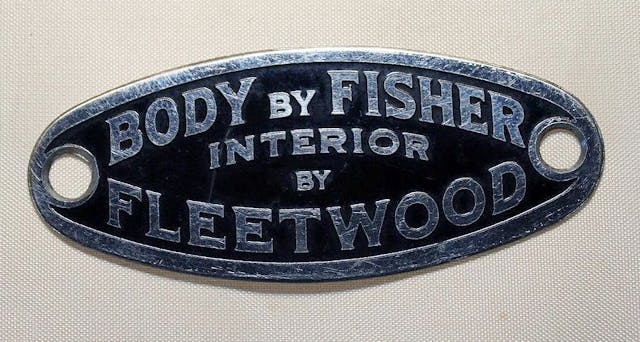
Curiously, the limited-production $13,000 1957–1958 Eldorado Brougham, whose construction required much hand work, did not use the Fleetwood name. Its fender tag, however, discreetly indicated “Body by Fleetwood,” meaning it was built in Fisher’s Fleetwood plant, along with other Cadillac bodies. It seems fair to call this example a bit of understated semi-coachbuilding.
Cadillac, meanwhile, had built a relationship with Italy’s Pininfarina. After creating a series of one-offs on Cadillac chassis, the Italian firm best known for design and bodywork for Ferraris won the contract to build the Cadillac-designed 1959–1960 Eldorado Brougham. These were genuine coachbuilt cars, with just 200 made. (The Pininfarina-built Cadillac Allanté from the 1990s was a whole other story.)
The Fleetwood flame burned on
Perhaps setting the stage for the ultra-distinctive and front-drive 1967 Eldorado on the horizon, Cadillac applied the Fleetwood badge to its DeVille-based Eldo in 1965, and it stuck around for more than thirty years. The nomenclature far outlasted the final Cadillac body from Fisher’s Fleetwood plant, which was the D-body 1987 Brougham (formerly the Fleetwood Brougham). That car was essentially the rear-drive 1977–1984 DeVille, rebadged simply as the Brougham after the DeVille and Fleetwood name moved to a front-wheel-drive platform for 1985. Cadillac moved Brougham production to the Arlington, Texas plant in 1988, where the 1993–1996 redesign, called the Fleetwood, would be built. (Cadillac was not about to call it the “Arlington.”)
The Fleetwood name took its final bow with a bit of irony. For 1998–1999, Cadillac commissioned a sort-of coachbuilding project when it issued a specially built long-wheelbase version of its front-drive DeVille, dubbing it the Fleetwood Limited. Superior Coach Company in Lima, Ohio, did the conversions on about 800 cars, closing the book on the Fleetwood story for good.
Chrysler and LeBaron
If the name “LeBaron” makes you think of Steve Martin and John Candy driving a semi-disguised (and ultimately burnt) 1983 Chrysler convertible in the 1987 comedy hit film Planes, Trains, and Automobiles, you’re not alone. Seven years later, another ’83 LeBaron convertible met a similar fiery fate in the Seinfeld episode, “The Mom and Pop Store,” in which it was misidentified as a 1989. The episode is known to many as “the one with Jon Voight’s car.”
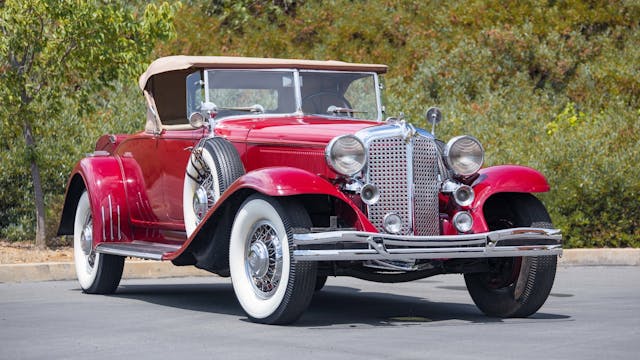
In real life, however, LeBaron was no joke. Raymond H. Dietrich and Thomas L. Hibbard founded their “automobile architect” firm in New York City in 1920, calling it LeBaron Carrossiers to imply a European pedigree. Despite the marketing fluff, the company’s work spoke for itself. LeBaron would go on to create designs for Lincoln, Packard, Locomobile, Pierce-Arrow, Cadillac, Rolls-Royce, Delage, Hispano-Suiza, and others. A merger in 1923 with The Bridgeport Body Co., which supplied Connecticut-based Locomobile, added body construction to LeBaron’s services.
Not long afterward, founders Dietrich and Hibbard left LeBaron to start their own separate design firms, with Hibbard joining Howard “Dutch” Darrin in Paris. LeBaron carried on with Ralph Roberts as head designer. In 1927, Briggs, which was at the time Detroit’s largest independent body maker, bought LeBaron and moved the operation to Detroit to serve as its in-house design department. Briggs mainly supplied Ford, Chrysler, Packard, and Hudson. Chrysler’s Imperials of the period wore some of LeBaron’s most revered designs.

LeBaron’s design work for Chrysler essentially ended in 1941 when it created the Imperial-based Newport dual-cowl phaeton, building five examples. One paced that year’s Indianapolis 500. That same year’s Chrysler Thunderbolt was a low, aerodynamic aluminum roadster with a one-piece retractable hardtop. Five were made, priced at $8250 each (about $167,000 in 2022 dollars).
By then, Briggs’ customers were relying mostly on their own design departments. In 1953, Chrysler bought Briggs, and LeBaron effectively ceased to exist. The name, however, found a new life as the top trim level for Chrysler’s 1957–1975 Imperial, with some “coachbuilding” suggested as part of the mystique.
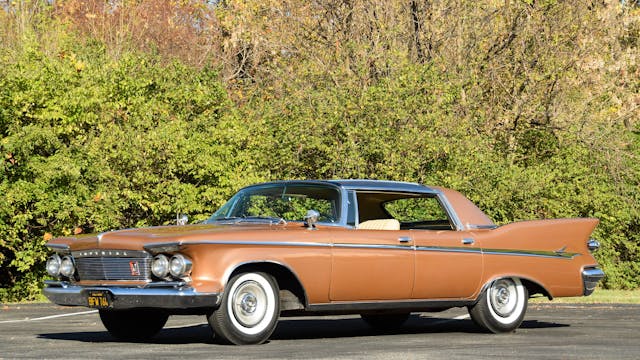
Coachwork, or coach-bull?
While the Imperial LeBaron touted some special features, these were merely assembly line variations, with one notable exception. The assembly plant performed a bit of coachwork on the 1960 Imperial LeBaron, which featured a smaller rear window than the base and mid-line Crown versions. Ed Micalef, an Imperial collector profiled by Hagerty, explained that line workers welded in a metal insert that partially covered the standard rear window, using asbestos rope under it and lead-filling the seams.
Micalef, who owns a ’60 Imperial LeBaron, says the time-consuming modification was prone to failure as the car aged. “The asbestos rope would absorb moisture and expand, exposing the seam,” he explains. For 1961, Chrysler invested in a separate roof pressing for the LeBaron featuring a smaller window, which was used through 1963. And that is why the model wore a “LeBaron coachwork” badge for those years only. A stretch? We’ll let you decide.
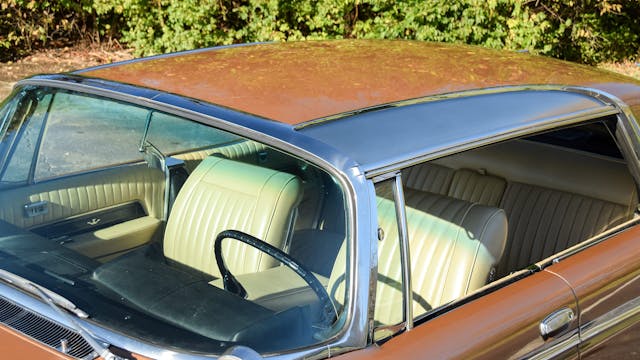
Life after Imperial
Following the Imperial’s first demise in 1975, Chrysler played musical cars with the LeBaron name. The 1977–1981 LeBaron was essentially a deluxe M-body Dodge Diplomat that also inherited the retired Imperial’s eagle insignia. The LeBaron badge jumped to a K-car in 1982, and the M-body version became the “downsized” New Yorker.

Various LeBaron-badged front-drivers would serve as Chrysler’s bread and butter for the next 13 years. The J-Body coupe and convertible were attractive bright spots in this badge-engineering morass and were the only LeBaron models to not share a body with Plymouth or Dodge. The once-storied name ended with that car in 1995.
Ghia: The Chrysler Years
Founded in 1916, Carrozzeria Ghia came to prominence with designs for pre- and post-WWII Alfa Romeos and some early Ferraris. In 1954, Ghia’s chief designer, Luigi Segre, purchased the company and put it on track for what would become a golden age. Among its many masterpieces were the “Supersonic” designs built on chassis from Alfa Romeo, Aston Martin, Fiat, and Jaguar.

Segre forged an association with Virgil Exner, Chrysler’s head of Advanced Design, who tapped Ghia’s coachbuilding prowess to turn his studio’s daring designs into drivable “idea cars.” The collaboration included the 1952 Ghia Special (a.k.a. Thomas Special), with Chrysler commissioning six copies. Ghia then also built another dozen.
Ghia adopted key design elements from both the Thomas Special and another Exner-Ghia collaboration, the 1953 Chrysler d’ Elegance, for the smaller-scale Volkswagen Karmann-Ghia. Karmann contract-built the car for VW.
Firebombs and Hollywood moguls
Ghia’s work with Chrysler would bear more fruit, both inside and outside the corporation’s walls. In 1956, Ghia put the Dodge Firebomb concept into limited production as the Dual-Ghia, using a Dodge chassis and engine and financial backing from American specialty truck maker Dual Motors. Just 117 were made, priced at around $7500.
Chrysler called upon Ghia’s coachbuilding prowess once again for the limited-production Crown Imperial limousine, starting in 1957. Ghia constructed each one using two bare Imperial coupe shells, a lengthened chassis, and other components shipped from the U.S., as well as fitting a handcrafted interior. It’s coachbuilding in a manner of speaking. Just 132 examples were made through 1965, and it was expensive, selling for around $15,000–$18,000. For comparison, the 1958 Cadillac Fleetwood 75 factory limo cost about $9000.

Ghia won another major project from Chrysler in 1963, building bodies for the company’s experimental Turbine car. The first five built were considered prototypes, and 50 more were used for a nationwide public evaluation campaign. Jay Leno has one of the nine still in existence.
Nineteen-sixty-seven teed up an intriguing Chrysler-Ghia coachbuilding collaboration, similar to the Dual-Ghia deal. Approached by TV producer Burt Sugarman to supply engines and drivelines for a limited-production sports car he planned to commission from Ghia, Chrysler obliged. The company shipped the Plymouth Barracuda’s 273-cubic-inch (4.5-liter) V-8 along with its driveline, chassis, and interior components, to Italy. Ghia adapted these to a proprietary frame and clothed it with a striking two-seat convertible body.
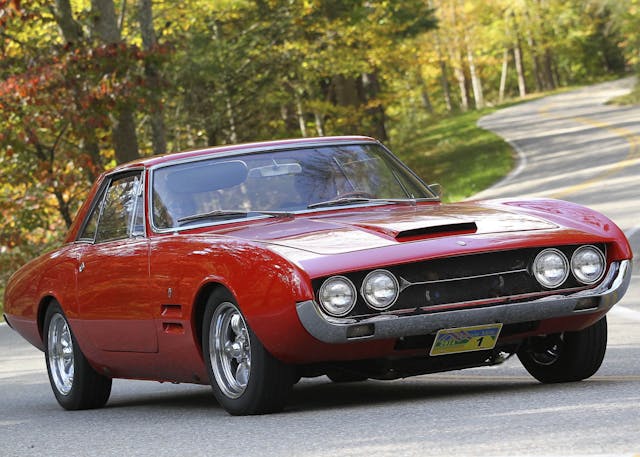
The resulting car, the 1967 Ghia 450/SS, remained a limited build, with an estimated 57 made. Chrysler had deeper involvement with this project, sending product development executive Paul Farago to Ghia to provide engineering support. Before he had emigrated to the U.S., Farago had previously worked for Ghia on the Exner concept cars. The 450/SS was the last Chrysler-Ghia mashup.
Ghia’s Road to Ford

Chrysler was, of course, not Ghia’s only client. Also in 1967, the firm’s low-volume production subsidiary, Officine Stampaggi Industriale (OSI), collaborated with Ford of Europe to design and build a coupe based on the German front-wheel-drive Taunus 20M, making about 2000 examples of the so-called OSI 20M TS.
That same year, Ghia’s destiny took another twist when Argentinian ex-racer and auto entrepreneur Alejandro de Tomaso teamed with New Jersey-based electric motor maker Rowan Industries to buy Ghia and Vignale, another renowned Italian designer/coachbuilder. The designs for DeTomaso’s Ford-powered Mangusta and Pantera sports cars emerged from Ghia, the Mangusta by Giorgetto Giugiaro and the Pantera by American designer Tom Tjaarda.
Then Ford shook things up, buying a controlling stake in DeTomaso in 1971. Ghia would go on to do design work for Ford, in Europe and America, including the 1976 Fiesta. During the Mustang II’s development, Ghia designed and built two drivable prototypes, including a notchback style that Ford had not initially planned. The final model adopted the prototype’s general form and some design features.
Meanwhile, Ford had begun using the Ghia badge to denote the premium trim line for several European models. Not surprisingly, the practice came Stateside, starting with a premium-trim 1974 Mustang II, followed by the 1975 Granada and a luxury version of its Mercury twin, called Grand Monarch Ghia. The Ghia badge continued on the Fox-platform Mustang for a few years.
After designing some Ford concept cars built in the 1990s, Ghia faded from sight, and Ford stopped using the badge on its European cars in 2008. An inquiry to Ford Motor Company in the U.S. about Ghia’s status turned up no answers. (Ghia: phone home if you’re out there!)

Epilogue
Some might say the former Big Three ran the names of great coachbuilders into the ground. However, adopting those names, even for mundane cars, kept alive at least the memory of a dying part of auto history. It gave customers a feeling they’d bought something special, which—diluted or not—is a worthy achievement.
***
Check out the Hagerty Media homepage so you don’t miss a single story, or better yet, bookmark it. To get our best stories delivered right to your inbox, subscribe to our newsletters.
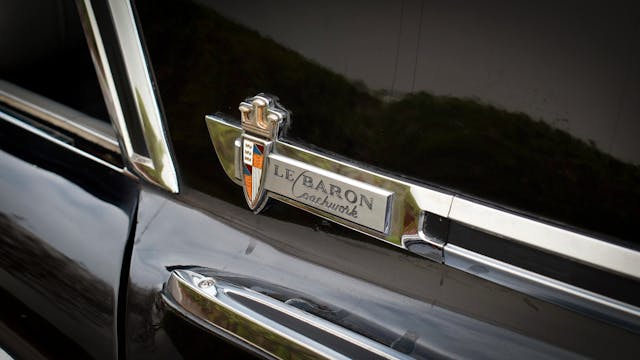






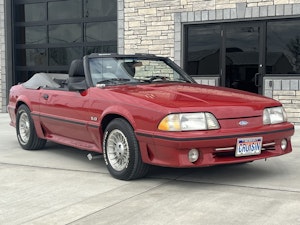


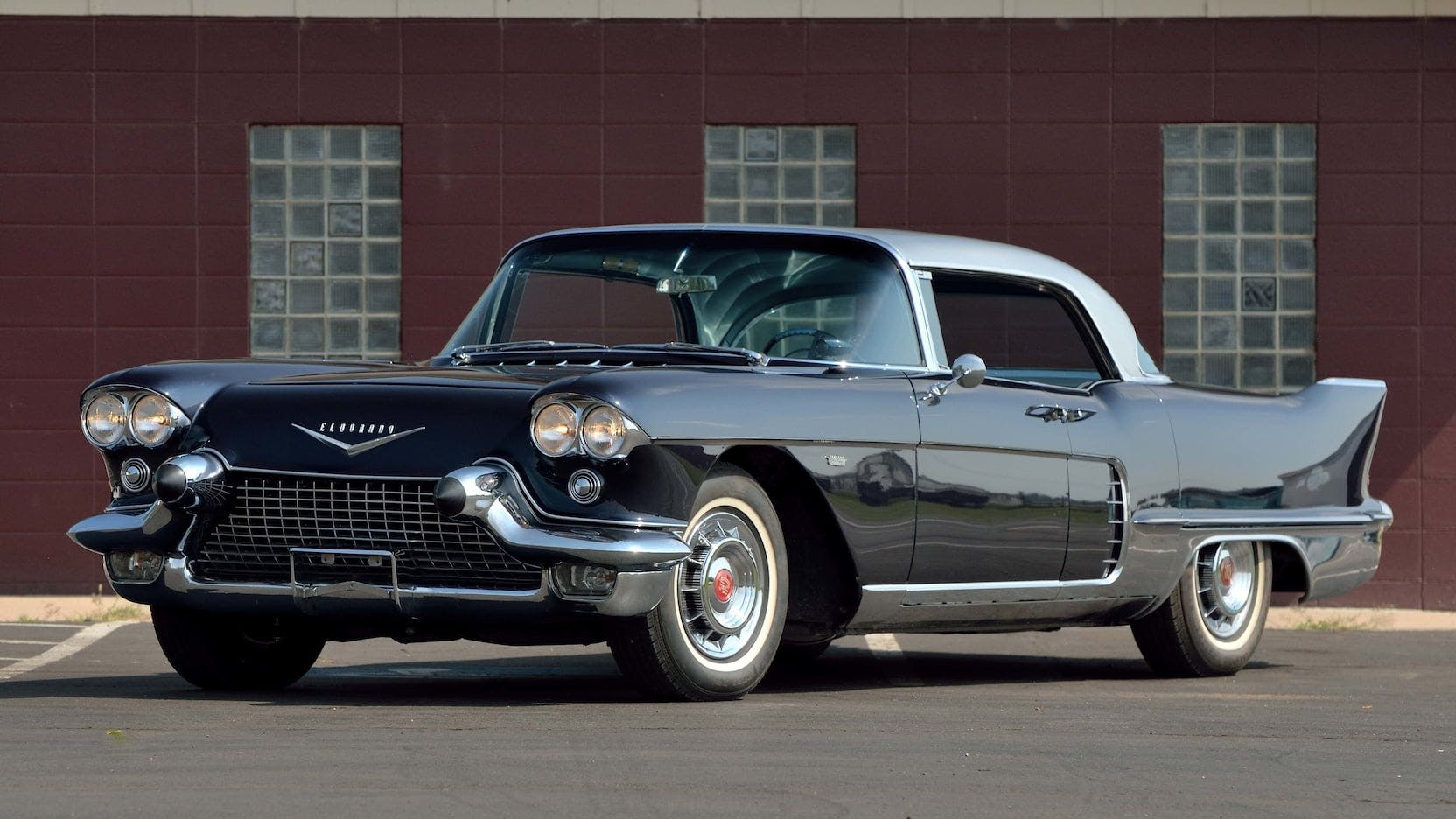
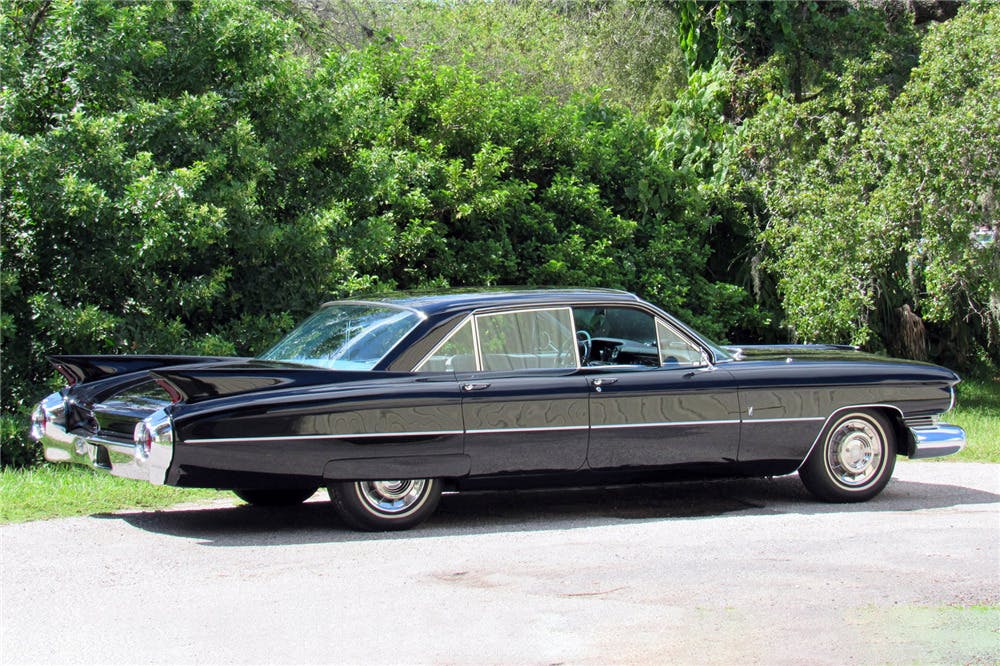
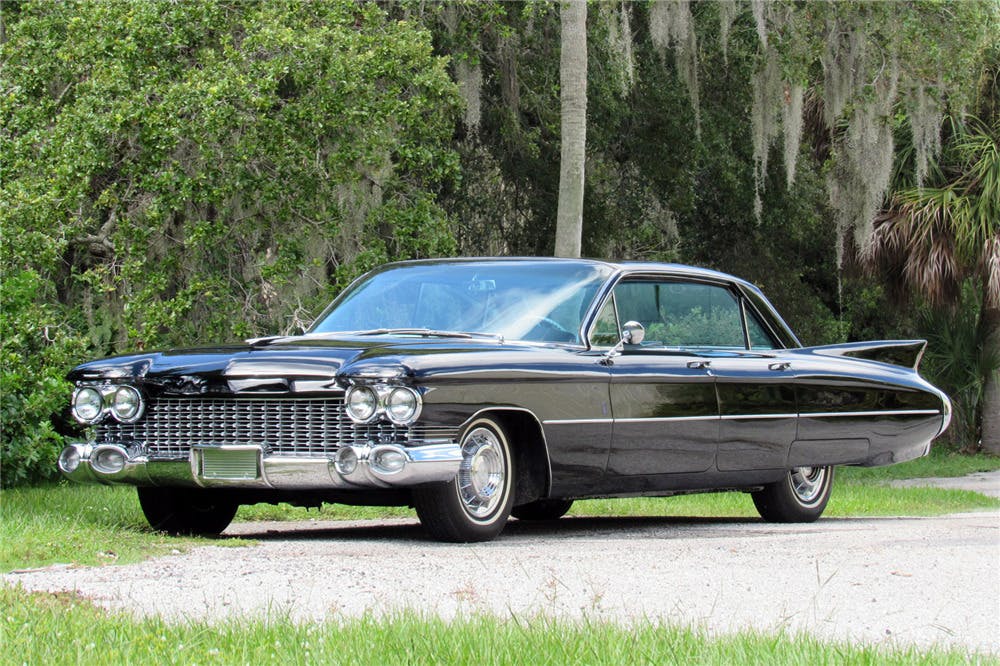


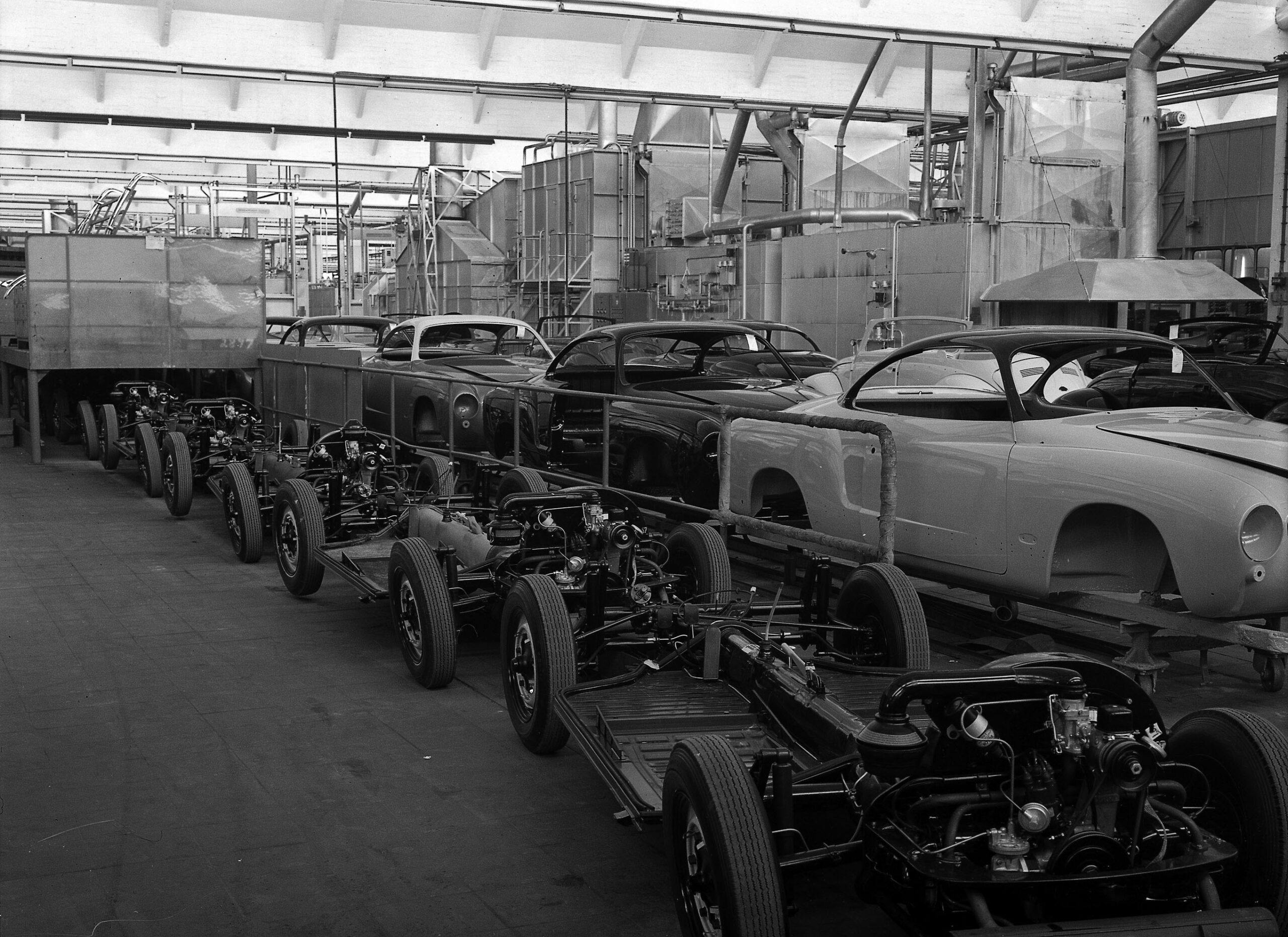
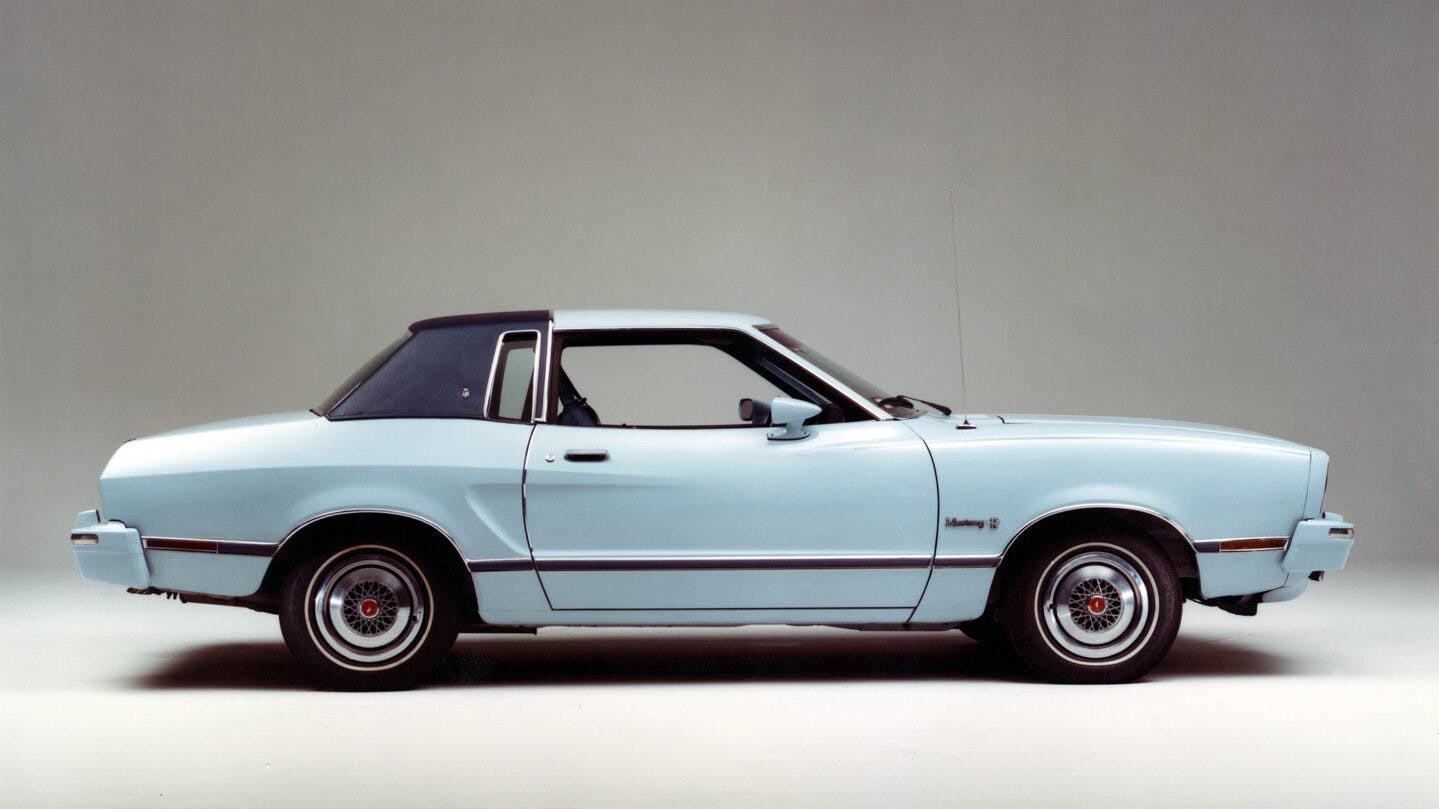
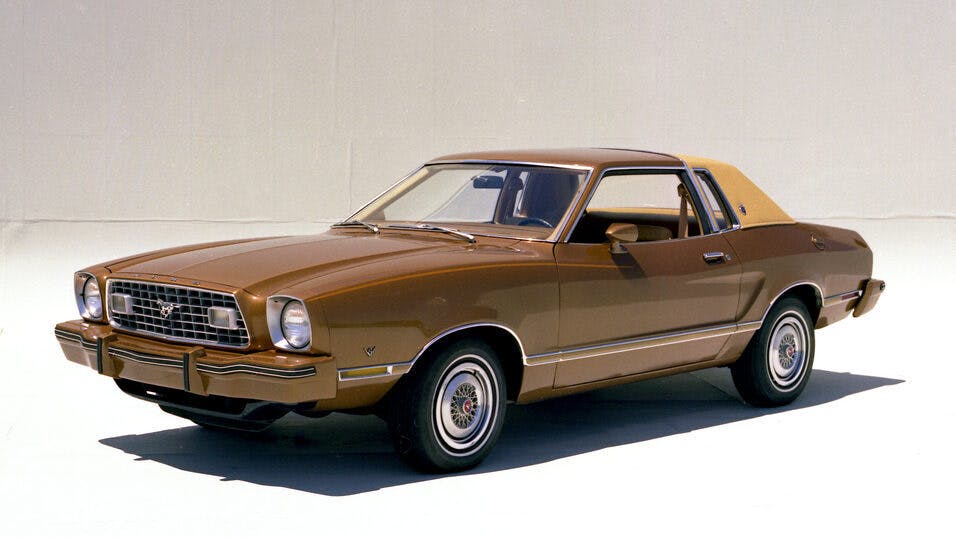
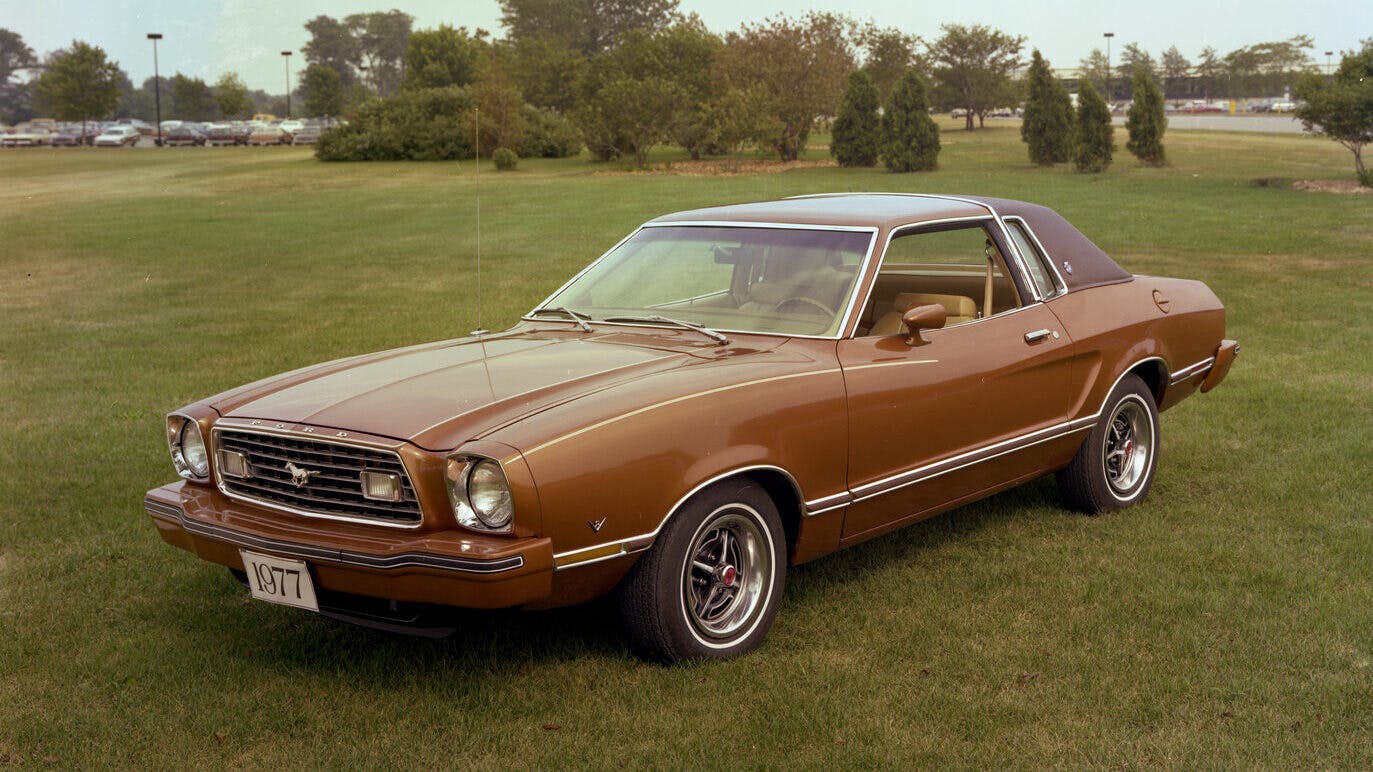






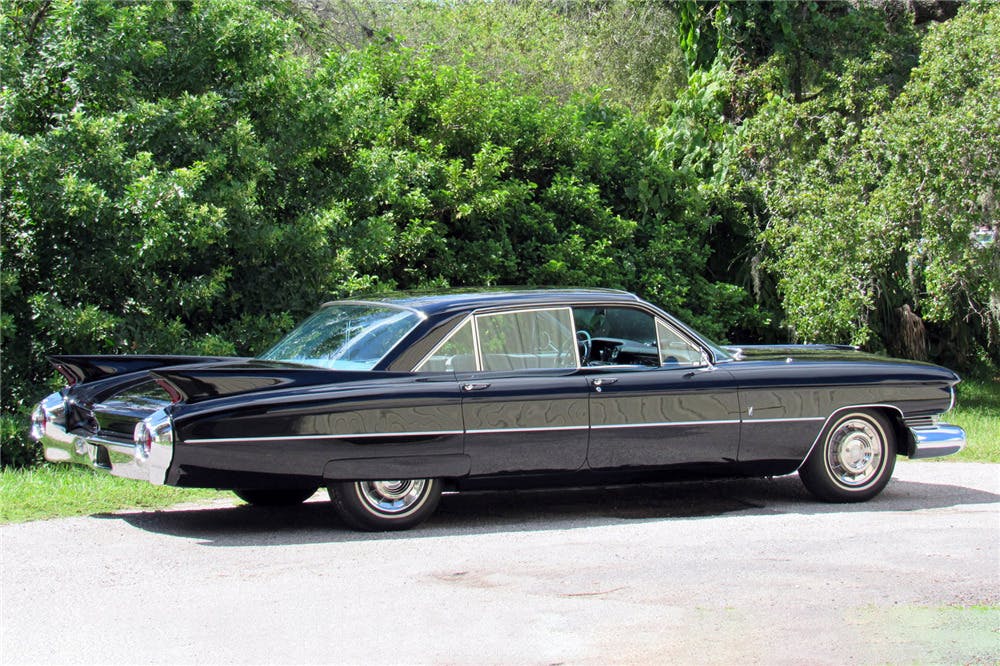










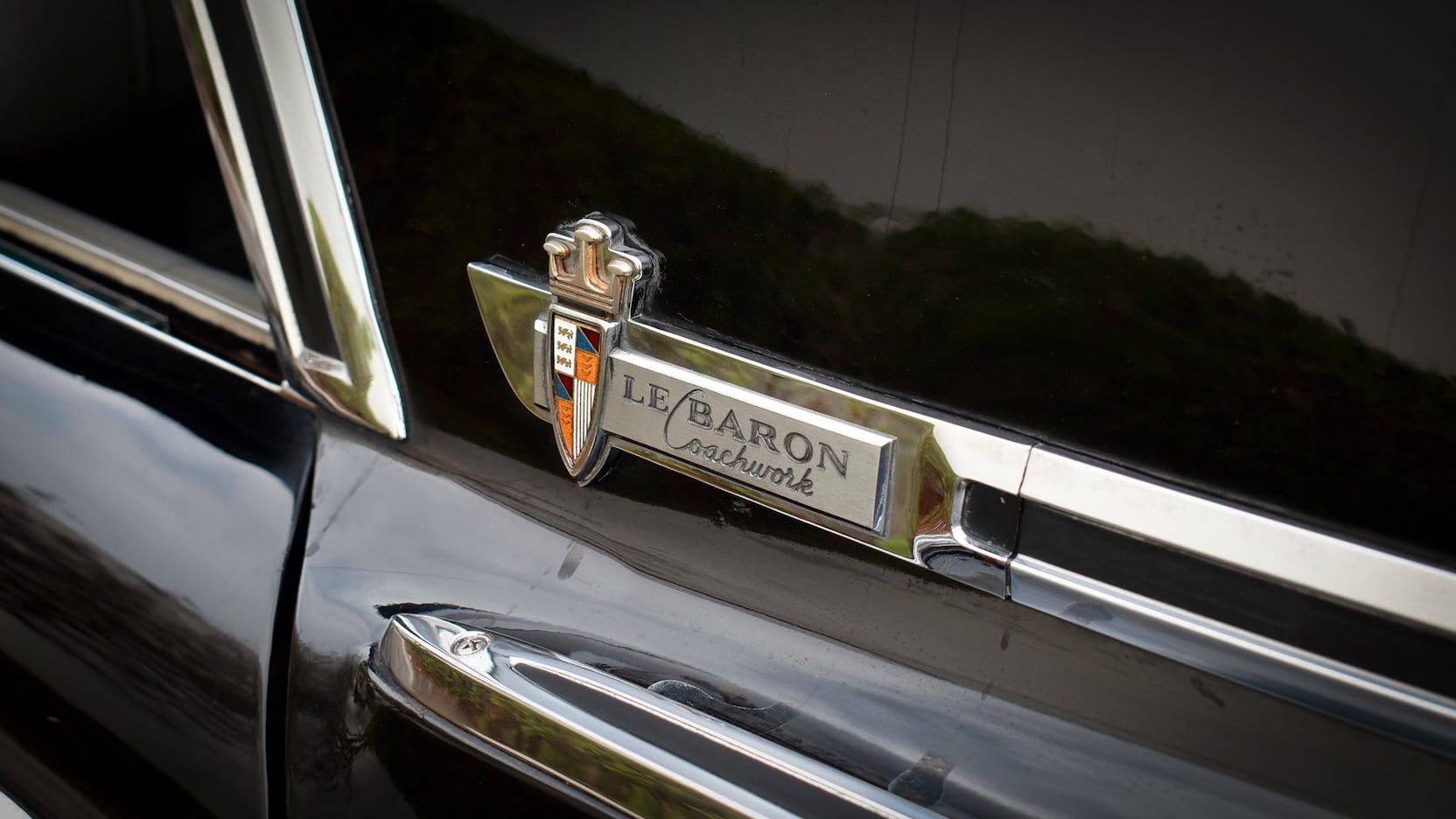
Interesting sidelight on the LeBaron badge on an Imperial shown at the head of the article: in 1961-63, when that badge was used on the LeBaron-level trim Imperials, there was a 10% federal excise tax on, among other things, jewelry. The LeBaron badge, because the frame around the “coat of arms” and the crown above it was gold plated, and because the coat of arms itself was done in cloisonné, was deemed by the feds to be jewelry, and Chrysler had to pay the 10% excise tax on it (just the cost of the badge, not the whole car).
Interesting on how these brands came and went but most of us remember them as trim levels which was the endgame for most of these.
I see in your article about the 1957-1958 Eldorado Brougham that it was built at the Fisher Body Fleetwood Plant which is untrue. It was built at Fisher Body Plant 21 Plant on Hastings and Piquette in Detroit a block away from the historic Ford Piquette Ave Plant. After the bodies were built they were shipped to the Cadillac Clark Street Plant for the Chassis and front end assembly. In 1959 the Cadillac Limousines were built there until 1984 when the plant was closed but is still there near the I-94 and I-75 freeways.
Thanks for using the photo of my white ’89 LeBaron GTC! Love my “Shelby-equipped” convertible. For more on it, check out this Hagerty write-up: https://www.h agerty.com/media/hagerty-community/rides-from-the-readers-1989-chrysler-lebaron-gtc-tii/.
Sorry, try this: https://www.hagerty.com/media/hagerty-community/rides-from-the-readers-1989-chrysler-lebaron-gtc-tii/.
The Cadillac Fleetwood was stunning and still is.
Here’s how out of touch I am: I thought it was going to be an article about busses.
Definitely not out of touch. Once the independent car body builders ceased to exist, bus body companies pretty much saved that word from extinction.
Poorly written, disjointed article with no clear connection between photograph and paragraph.
Not a perfect article, but what is? I found it to be informative; I learned a lot about those famous names, in a concise format. And while the connections between photos and articles were indeed not always too clear, the article itself was anything but disjointed.
Jim: Thank you for this quite interesting story. Being a Pennsylvanian my entire life, I feel somewhat embarrassed that I had no idea our state is where Fleetwood Coachworks originated! Great job my friend!
Gov. Nelson Rockefeller of NY personally owned a 1957 midnight blue Imperial LeBaron limo. It may still be seen, with its NY registration plate 1 in a grand carriage house/stable at his family’s Hudson River estate “Kykuit”, in Pocantico, NY (near Tarrytown). When I last saw it about 10 years ago, it needed restoration…but oh, what a “carriage house-find!”
I had an orange ‘72 Karmann-Ghia, absolutely beautiful. Traded it for a white ‘67 bug convertible. A European model with disc brakes and a 12volt electric system. Had the Karmann badge just behind the right front fender.
Had a lot of fun with both. Wish I still had one 😢.
Interesting story. I wish though that you wouldn’t perpetuate the claim that workers were, or are unskilled. In comparison to the coachbuilders they aren’t able to shape bodies for example, but cost savings dictated that change, not lack of skilled workers. Vehicle building is a skilled profession.
I think you make an excellent point. Further reinforced in a world where the average person don’t know which end of a screwdriver goes in their hand.
Our ‘79 VW Super Beetle Convertible has a Ghia badge. I was curious as to why VW didn’t make the bodies themselves. Was it just the Super that they farmed out?